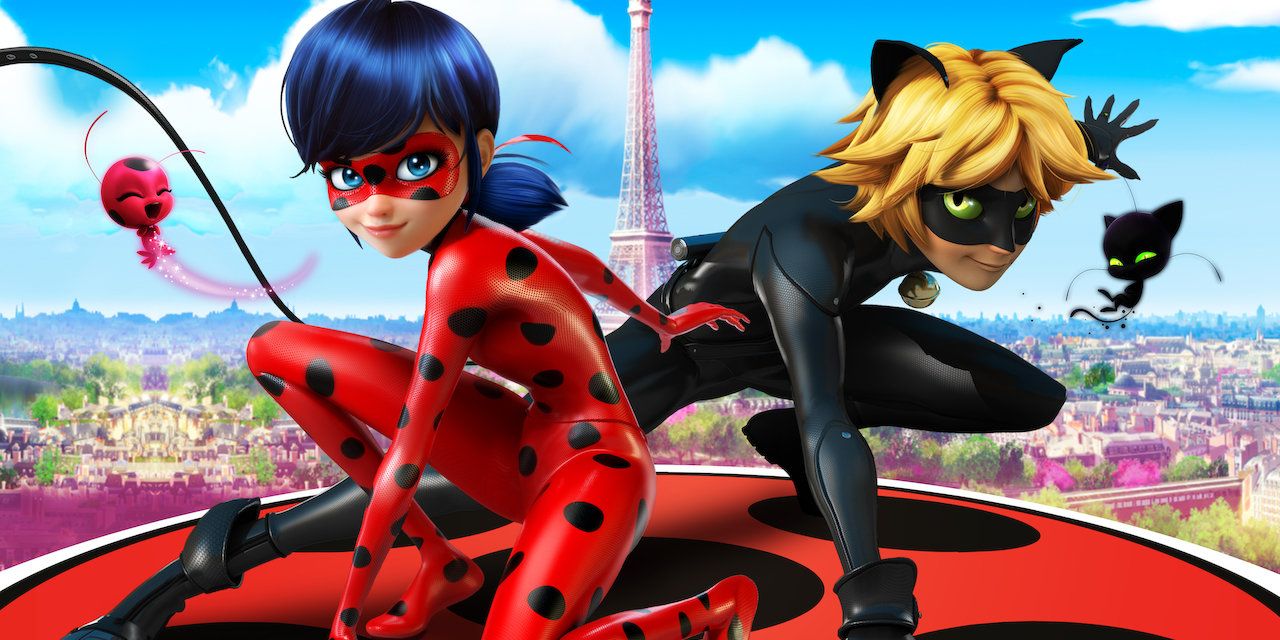Is There An Anime Version Of Miraculous Ladybug
The global rise in the popularity of anime has resulted in an interesting conundrum. Several international shows accept blatantly imitated the aesthetics of anime, if not several of the storytelling features, likewise. This repeatedly begs the question as to what exactly constitutes 'anime,' with several not-Japanese productions constantly skirting the line.
Ane such show whose verbal status makes for an specially complicated instance isMiraculous: Tales of Ladybug & Cat Noir. This drawing basks in its anime inspiration, just some of the forces behind the French-animated series are too Japanese. While as well taking some influence from American superhero comics, the show's rather obvious ties to Japanese animation make its definition equally either wholly Western 'cartoon' or Japanese 'anime,' or a combination of the two, complicated. Allow'south examine the prove'southward various ties to the country that birthed anime to explain whyMiraculousis then catchy to pin downwards.
Miraculous Is a Magical Girl Drawing
As well as American superheroes, Miraculous is very much made in the vein of magical daughter anime such as the iconic Sailor Moon, who are themselves superheroes of a different mold. This is seen namely inMiraculous's star, a cute, somewhat fashionable, female superhero, as well as the transformation sequences. The stock footage of when Marinette becomes Ladybug is straight out of a magical girl show, from the excited shouting to the as theatrical poses.
The team of superheroes that Ladybug eventually comes to be part of not merely resembles some Western superheroes, but also the team of Sailor Guardians. This stems from the similarities betwixt many magical girl and tokusatsu shows, which typically accept a team of similarly dressed, colorful superheroes.
Miraculous Is Partly Made in Japan

The exact inspiration forMiraculous was its producer having watched numerous anime. The anime aesthetic also extends to the animation itself, and initially, this was going to exist even more so the instance. The original promotional video for the series employed traditional 2D blitheness, hoping to bring to the screen a sense of manga-esque color. This presented problems with animating certain scenes, however, so the decision was fabricated to animate the series using CGI.
The iconic Toei Animation Co., which has produced such works as Dragon Ball Z, the original Generation 1 Transformers cartoon, and of course, Sailor Moon, also co-produce and distribute the series. The show was of particular interest to the studio due to its similarities with PreCure, a series of Toei's that is also a magical daughter testify. This non only brings the magical girl influence total circle but also further complicates the affair of whether or nonMiraculous counts as an anime. Subsequently all, Toei is a Japanese company, which is commonly accepted as definition plenty, though it did not actually animate the series. That task roughshod to different blitheness studios, some French and another being South Korean. This itself doesn't negate the show perhaps being an anime, as numerous unquestioned anime-branded series' have had their blitheness outsourced to Republic of korea, similar Netflix'southCastlevania.
In fact, a number of shows on Netflix and other streaming services, despite having next to no Japanese connection, are labeled as 'anime.' This is plainly a purely marketing-based decision, just information technology does blur the line further about what constitutes anime and whether the label is now completely watered down. Bolstering Miraculous's merits to that label is its upcoming spinoff manga courtesy of Japan's Kodansha. So, even if it started with the French, the series is now beingness officially continued to the state where its main influences originate. Whether this further legitimizesMiraculousas anime or muddies the consequence more than, is upward to the fans.
Source: https://www.cbr.com/is-miraculous-anime/
Posted by: harrisblapeneve.blogspot.com

0 Response to "Is There An Anime Version Of Miraculous Ladybug"
Post a Comment